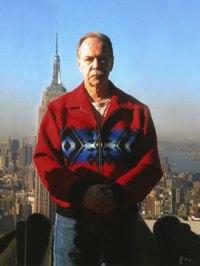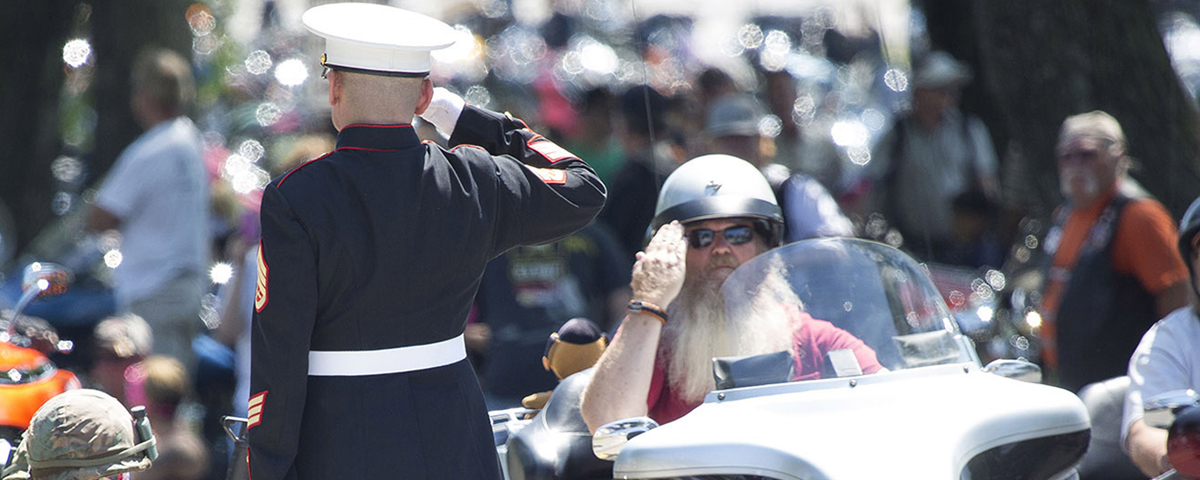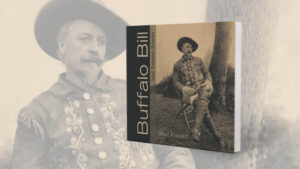Ray Manzo would not leave his comrades behind. A combat engineer in Company B, 7th Engineer Battalion, 1st Marine Division, Manzo’s 2nd Platoon was on a mine sweep near Hoi An on November 6, 1968, when it came upon a group of South Vietnamese soldiers firing into a treeline.
The first lieutenant told his platoon to hold up. “Instead of me stopping, I followed the lieutenant another 20 yards,” Manzo said. The shooting had ceased and the lieutenant praised the South Vietnamese, who were yelling: “Beaucoup VC! Beaucoup VC!”
“Then the lieutenant said, ‘OK, Manzo, move ’em out.’ As I raised my arm, I turned toward the platoon and watched as one of our men was blown in half,” Manzo recalled. In an instant, seven command-detonated mines were tearing his platoon to shreds. Viet Cong ambushers raked the Marines as they dived for cover.
Manzo spotted a wounded Marine and called a corpsman to get to him. When the corpsman balked because of the intense enemy fire, Manzo decided to go instead. “The guy was across the road, and I thought: ‘OK, God, it’s just you and me. I say you’re gonna help me cross this road, get him and come back, or I’m gonna stay there forever.’ I got beside the guy and said: ‘Koonsman, you have to crawl on my back. I can’t raise up, I’ll be a dead man.’ He tried rolling over, but fell back, screaming in pain. Bullets were smacking the road next to my body. I yelled, ‘Koonsman, get on my back or I’m gonna drag you across every rock I can find!’ He finally climbed on, and I got him to safety.”
Manzo then saw another wounded Marine in the line of fire. “He just sat there, shrugging his shoulders as we called him,” Manzo said. “So I ran and grabbed him, and carried him back. He had serious leg wounds and couldn’t move.” Manzo then went for a third Marine, but found he was dead and had to leave him until the fighting stopped.
For his bravery that day, Manzo was awarded a Bronze Star Medal. Three weeks later, he saved the lives of two Korean Marines and was instrumental in quelling enemy positions during a five-hour house-to-house firefight. “They wanted to put me up for a Silver Star and a Bronze Star for the others,” recalled Manzo. “The others refused the Bronze Star. I said if they don’t get it, I don’t get it. Besides, we were just doing what we were trained to do.”
 Ingrained in Manzo was the belief that you never leave a comrade behind. He’d risked his life living to that standard in Vietnam, and would later be driven by it back home.
Ingrained in Manzo was the belief that you never leave a comrade behind. He’d risked his life living to that standard in Vietnam, and would later be driven by it back home.
After Vietnam, Manzo didn’t look back. “I just wanted to put it all behind me,” he said. “When people would cry and tell me about the guys getting killed, I didn’t want to know about it. My life just moved on, until the spring of 1987, when I went to Washington to see the Wall. That’s when I learned we knowingly left guys behind after the war. I had never heard anything about it before.”
Manzo would never be the same. He experienced an all-consuming drive to right an unfathomable wrong: that the nation had reneged on its sacred vow to its warriors to leave no man behind. “It was eating at me like a cancer,” he said. “I kept asking, what can be done to make this country aware that guys were left behind and could still be in Southeast Asia.”
In September 1987, Manzo heard about a Vietnam Veterans Motorcycle Club “POW vigil” in Asbury Park, N.J. He checked it out, holding a makeshift flag pole flying an American flag, the POW/MIA flag and Marine Corps flag. Standing there observing the group, vigilant and proud, it struck him: These are the kind of guys who can get the POW issue the national attention it needs.
What crystallized in Manzo’s mind was the notion that a massive demonstration by thousands of bikers could stir the country to action. He went home and started writing hundreds of letters to military and veterans organizations, congressmen, senators, and newspapers and magazines, including a handful of biker magazines.
“I am asking for your assistance in organizing a Nationwide Run all across America for as many bikers as possible to ride to Washington, D.C., for Memorial Day 1988 and bring about an end to the POW/MIA problem,” the letter said. “We have to make one more huge effort to get our POW/MIAs home. Please help.”
Weeks passed and Manzo felt dejected by the lack of response, until an issue of Outlaw Biker showed up, and there was his letter. Then Easy Riders magazine ran his letter. “Suddenly,” Manzo said, “the wheels were in motion.”
Before long, Manzo got a call from Larry Darkow of Minneapolis. “We talked a while and Larry said, ‘Do you mind if I draw up a flier for this rally?’” Manzo said. “The flier was very rudimentary, but I made copies of it and began sending them out.” Soon, Manzo got a call from Bob Schmitt, who was with a POW support group in Maryland, offering to help. Then a woman from Virginia called and told him about John Holland from The American Foundation for Accountability of POW/MIAs. “She said, if there’s anybody who can help out with getting permits in Washington, it’s John Holland. John sent me a letter saying he’d long wanted to do a bike rally in Washington,” recalled Manzo. So he began working with Holland and his colleague Walt Sides to devise a plan for Rolling Thunder.
“I told John to work up a parade route through D.C.,” said Manzo. “We got together in March 1988, but the route he sketched—entering the city through a tunnel—didn’t work for me.” Manzo believed the maximum impact would be for the bikers to cross the Arlington Cemetery Memorial Bridge to the Lincoln Memorial, follow a route past the White House and Capitol and then ride back to the Vietnam Veterans Memorial. And, Manzo said, he wanted to assemble in the Pentagon parking lot. Holland told him that officials would never allow the bikers to cross the Memorial Bridge or use the Pentagon parking lot.
Manzo persisted. “Before we left for the first Rolling Thunder,” he said, “I got a call from a sergeant at the Pentagon and I explained what we wanted to do. About an hour before we were to leave, he calls back and says: ‘The parking lot is yours. Just do us proud.’”
On the morning of the rally, Manzo spoke with the lieutenant in charge of the D.C. Police Motorcycle Division, which was to escort the parade. “I just explained to him why it was so important that we enter the city across the Memorial Bridge. He said to me, ‘You seem really sincere about this.’ Then he gets on his radio and says: ‘There’s been a change in the parade route. We’re coming across the bridge.’”
Crossing that bridge in 1988 were an estimated 3,000 to 5,000 bikers who’d been inspired by Manzo’s call. “It was like a natural high,” recalled Manzo. “Here’s all these people who don’t know me from Adam, who thought the ride was a worthy thing to do.”
Manzo anticipated that Rolling Thunder would be a one-shot deal. Its mission was to spur immediate action to force the U.S. government to resolve claims that American POWs were still alive in Southeast Asia. Nonetheless, with enthusiasm running high for the “Run,” Manzo agreed to lead the effort for “Rolling Thunder II” the following year.
In 1989 there was a dramatic rise in interest and riders, with more than 30,000 participants. Manzo’s idea had taken hold. “Washington was hearing us, and people were taking the issue seriously,” he said. The next three years saw the estimated number of bikers at Rolling Thunder approach 75,000.
As Rolling Thunder V came around in 1992, however, Manzo began to think time was running out for the POWs. “For me, Rolling Thunder was about getting something done immediately for the living POWs,” Manzo said. “It wasn’t something for me to do forever.”
In 1992 Manzo relinquished his leadership role in Rolling Thunder and passed the torch to others who had helped bring his dream to reality, including Holland and Sides, whom he credited for its ongoing success.
Manzo has attended three Rolling Thunder runs since 1992, and plans to be there this year. Although he never imagined Rolling Thunder would still have resonance 25 years later, he believes it remains an important reminder to the nation that never again can it leave behind its noble warriors who have answered its call.
And, Ray Manzo pledged, “Everybody who ever serves can count on the fact that if they are ever left behind, there are guys like me who will never let them be forgotten.” F





